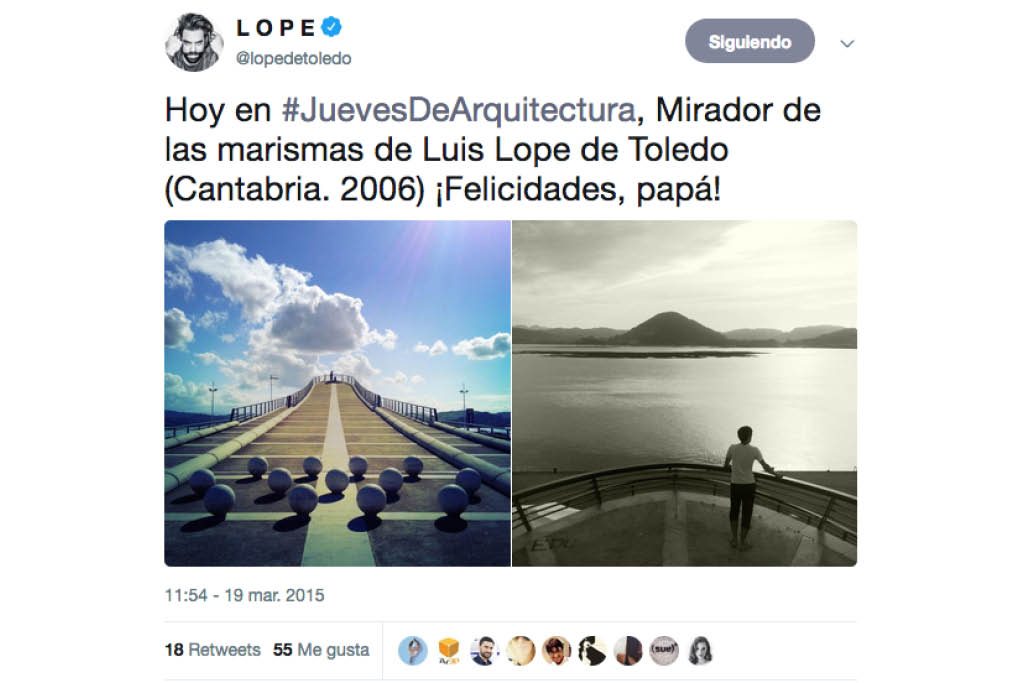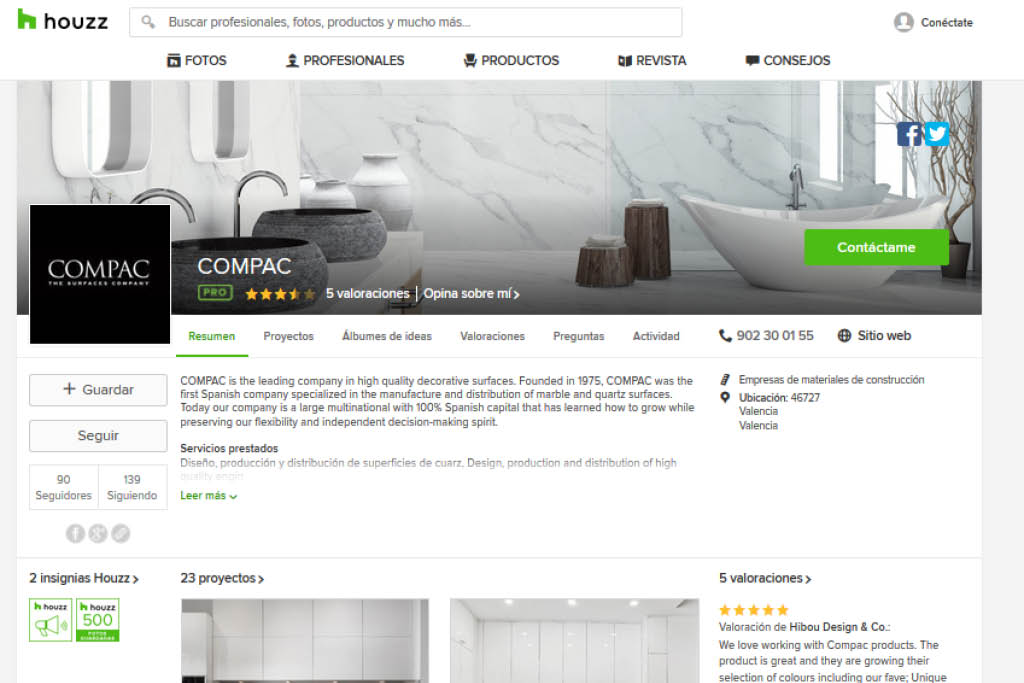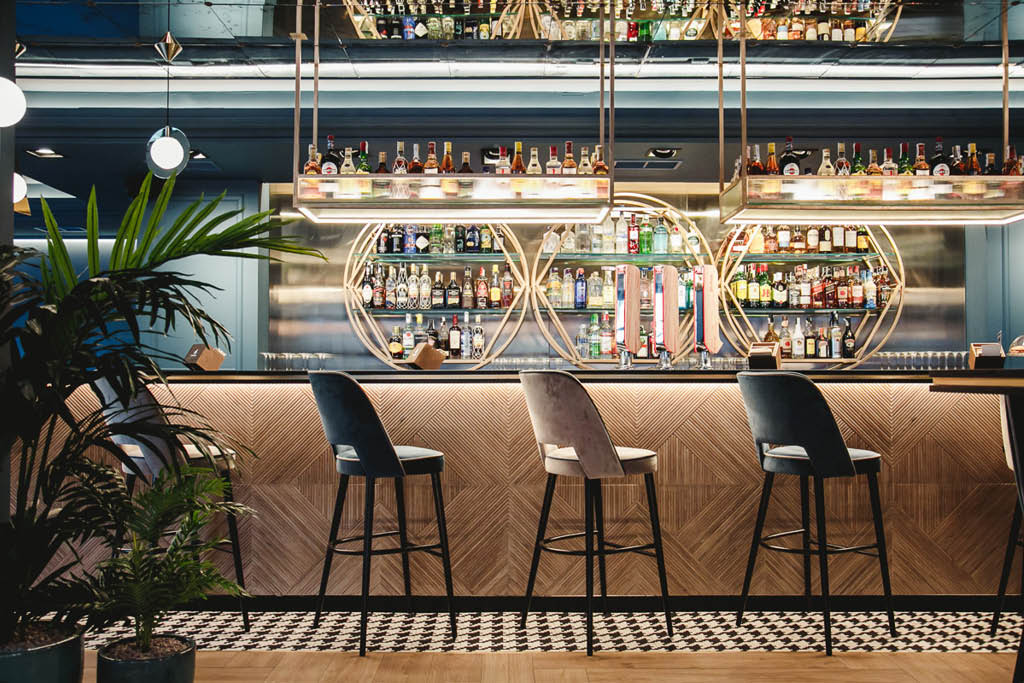
Despite the many social networks we are used to using on a daily basis being linked to the private sphere, this does not mean they cannot be powerful tools to promote work projects. They are mass audience platforms that are intuitive, fun and highly visual—why not get some professional return from them? Architecture has found a gold mine on social media with some platforms being an ideal match to the inherent features of the sector. Without further ado, here are some of the top networks for architects:
Facebook. This is the social network par excellence and has the highest number of users. A presence here is useful given the large audience. Furthermore, Facebook offers you the chance to diversify content, spreading it across several profiles (personal and business), meaning information can be provided on professional projects without too much unwanted interference. A firm’s profile is a meeting place for the company and clients—an amplifier without any outside noise. Nonetheless, before publishing projects on the company site, you need to have one thing very clear: what do you want to tell to your audience? Will it be a page for sharing articles or just for showing projects, renders, budgets and other company features? Go for pinpoint focus, as trying to cover everything dilutes impact.
LinkedIn. This is the social network for professionals. There is no better platform than LinkedIn for virtual networking. If you are looking for connect with other architecture colleagues or sectors, you just need to add them as contacts and interact with what they publish. This network offers you the chance to get to know people for sharing projects with or simply for spotting business opportunities. Firms can also use it to recruit talent, meaning it is a good idea to keep your profile constantly updated.
Pinterest and Instagram. These are more visual media and, therefore, provide added value for architecture. The growth seen in recent years and operational dynamics mean Pinterest is an ideal showcase for architecture or design projects. Instagram, in turn, is the fashionable network offering more innovative functionalities. It has become a home for designers to showcase their wares, while also being a space to garner inspiration.
Houzz. Despite being similar to Pinterest, the interesting aspect to this social network is its being geared towards architecture. The network hosts over 13 million images enabling users to plan their projects simply and comprehensively. What makes Houzz stand out is the architects directory filtered by area (where every practice or professional can be listed referencing completed projects) and the category box ordered by rooms and projects so that architects can find necessary inspiration. It is without a doubt the most comprehensive network for architecture professionals.
YouTube. This giant video platform has relevant content for all sectors which, of course, goes for architecture too. Whether you want to share a specific project in a clip or even as a tutorial, or whether you are looking to broaden your knowledge through benchmark firms, YouTube can fulfil both options. In this sense, it is worth highlighting the following three architecture channels:
- CTBUH. This is an interesting channel on urban planning and home development in big cities. The Council on Tall Buildings and Urban Habitat offers innovative design and construction strategies, while also organising conferences and interviews with top architects.
- Donotsettle. Two young graduates from the Delft University of Technology set up this architecture vlogging project to take us around cities and explore their urban environment, visiting recently built projects.
- Architecture is a Good Idea. The Polish architectural historian Radoslaw Gajda is behind this video blog where he analyses the iconography of buildings and how contemporary architecture can reinterpret architectural traditions.
Google +. This network is not particularly linked to architecture but should always be taken into account as it helps boost SEO for all content. If we are looking for our project to stand out from the internet crowd, we need to use all tools available for this. Google Plus is one of the most powerful.
In turn, Twitter should also be tagged thanks to its ability to generate spaces for both ephemeral and ongoing dialogue and debate. For example, every Thursday Twitter hosts the #JuevesDeArquitectura, an initiative promoted by the architect Luis Lope de Toledo that has become a mainstay. In this vein, amongst different political and celebrity trending topics, one day a week sees technical comments on the world’s most beautiful buildings hustle their way in.
Interview with Luis Lope de Toledo, creator of #JuevesdeArquitectura

What is your take on the world through the twitter filter?
Full of politics, celebrity criticism, art and lots of sardonic humour.
And is it different from the #juevesdearquitectura tag?
On Thursdays, a little slice of architecture sneaks onto the TL of many people. And for something cultural to be able to find a place on a social network makes it a great move.
How did you manage to ‘institutionalise’ the #juevesdearquitectura hashtag?
It started out as a silly snippet every Thursday. @arcitecta followed my crazy idea from the start and thanks to this, it gained more visibility. Then, associations of architects and institutions also started to follow.
Did you promote it on other channels than Twitter?
I’d never used it on other social networks. But what’s interesting is that afterwards I’ve seen people I follow on Facebook upload publications every Thursday; the same goes for Instagram. That’s when I realised it had gone beyond just me.
From your pragmatic/technological/historical/family perspective, do you think it is easier to be an architect today than in the past?
Not just an architect, I think it is easier to be what you want. Before, only a privileged few could go into education but today, access to information is more readily available to everyone. And Internet is largely responsible for this.
Thanks to those recent advantages, and talking about ‘gadgets’ or ‘apps’, an architect in the second decade of the 21st century cannot head out onto the street without…
Without a critical eye vis-à-vis everything they see. If you are referring to technology, the progress made by mobile phones means you can take photos of anything you find interesting, or even take sketches and redraw ideas you have in mind.
Where are the projects you most admire located in the world?
In Japan, without any doubt. Their understanding of domestic space is astounding. They tear down all our prejudices about homes in all of their projects.
Which project would you like to take a snapshot of that you have yet to visit?
When I was in Japan, I was unable to get to Moriyama House and this place was key to the development of my PFC. It is a home that everybody should see, whoever they are.
In addition to Luis Lope de Toledo, who is the benchmark architect on social media?
There are lots of very interesting ones. The sardonic blog @arquitectamos, the videos by @teruriru_ on YouTube and Javi Bravo’s photos on Instagram, to name just three.
Finally, do you think @juevesdearquitectura has an expiry date?
I couldn’t say. What I do know is that our profession is undergoing an almost obligatory refresher and new technologies mean we have to embrace it. In this sense, the same thing could happen to the #JuevesDeArquitectura hashtag, although the idea of showing architecture will always be there.


